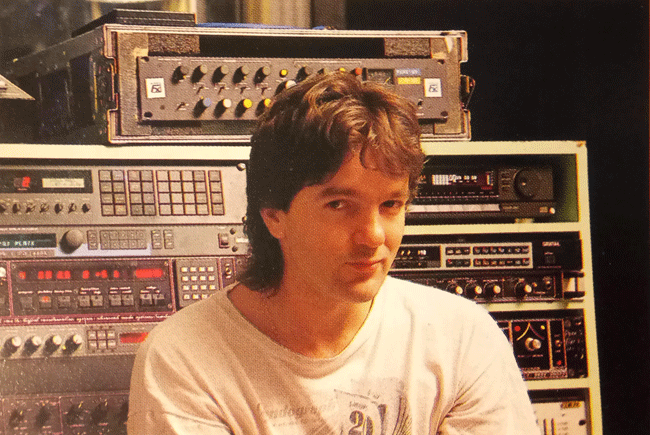
(Ted at Air Studios in 1988.)
Not Fade Away
Chronicles of a Sound Engineer
By Ted Hayton

(Ted at Air Studios in 1988.)
B a c h T o T h e F u t u r e
I have been involved in music for most of my life, a passion that I completely owe to my mother who introduced me to the classics from a very early age. I devoured most of her record collection from Tchaikovsky to Glenn Miller and learned to play various instruments during my early teens. While attending Cockermouth Grammar School I met a couple of like-minded guys and of course we formed a band, two acoustic guitars and double bass playing Bach baroque music. Although a great deal of fun, we rapidly discovered that the girls were not flocking to hear us, so we started to experiment with some much more modern stuff including Pentangle and Procol Harum (who also had a Baroque influence), sadly this had scant effect on our female fanbase which consisted entirely of my sister Liz.
Richard Lee, the double bass player and I both ended up together at the University of East Anglia in the mid '70s. I later worked at the university's Audio Visual Centre as a general technician and cameraman. I had notions of a career as a film cameraman, though curiously the AVC staff presented me with a book on Sound Recording when I left (I still have it), they obviously knew something about my future I was as yet to discover. Richard meanwhile had teamed up with a couple of musicians at UEA to form the Bowles Brothers Band. They too were an acoustic group, singing four-part close harmony with guitars, violin and double bass and soon became very popular after university when we all moved down to London. The band also enlisted Sue Jones Davies, an extraordinarily talented actress and singer who is probably best known for her starring role in Monty Python's Life of Brian.
Unsurprisingly, they were an entirely unsuitable match for the tinnitus-inducing PA systems of the London pub rock scene; I do recall with horror their first live performances which were a total nightmare of endless, deafening feedback. The band (in some desperation) invited me to apply my recently gained technical skills to tame their sound and after a few weeks of experimentation, we slowly started to get everything under control. Two weeks later they landed a European tour supporting Don McLean so my fifth ever live mix was in the Albert Hall, a true baptism of fire! This was for me the beginnings of a long career in music production which eventually took me to recording studios all over the globe where I was lucky to be working with many of the world's top artists.
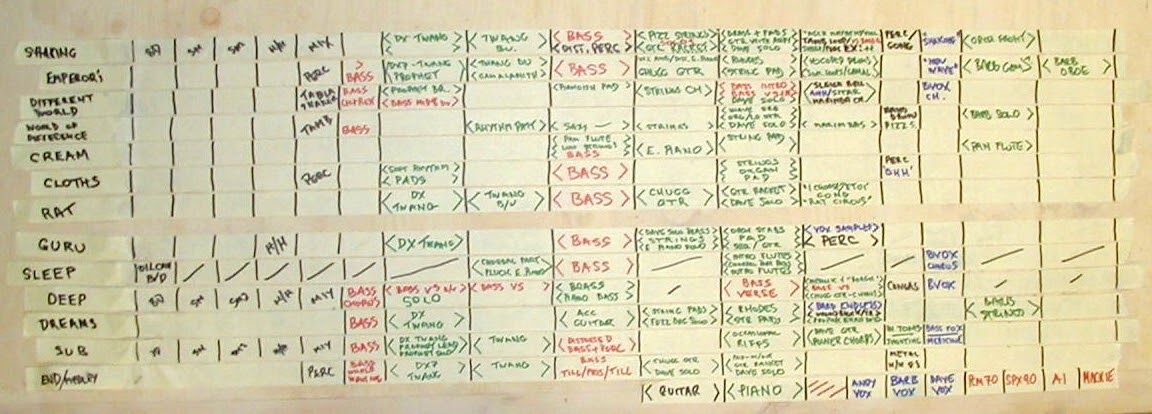
S p a c e S t a t i o n
My recording career started in the late '70s when I was introduced to the talented owners of Spaceward Recording Studios. They were both Cambridge graduates and invited me to employ my electronic skills to help in the construction of their novel computerised recording console (believed now to be the world's first) for their new studios based just north of Cambridge. When the studios opened, I was one of just a few who had an intricate knowledge of the console and so began to cut my teeth as a recording engineer.
The recording sessions were long! Bands who had only booked for the day would barrel up at 10am and then we would burn through to 2am in the morning. They would invariably leave with the 1/4" tape masters and cassettes of both A & B sides of their single ready for pressing. Time management was critical; after a few hours' kip it would all start again with another band. On occasions I even recorded entire albums in a day, skills that would later come in handy when I worked with Dave Edmunds.
Spaceward Studios became very popular, not only with local acts such as The Higsons and The Farmer's Boys, but also with international chart-topping artists including The Stranglers, Gary Numan, Stiff Little Fingers, Scritti Politti, UK Subs, the list goes on and is long. However Spaceward was much more than just a studio: I learned so much there, the wealth of creative talent of the studio staff ensured a tremendous pioneering spirit and it was not unusual to witness new equipment being designed and built on the spot to achieve a particular sound.
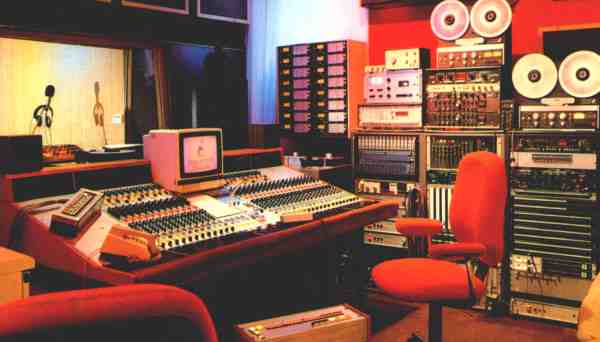
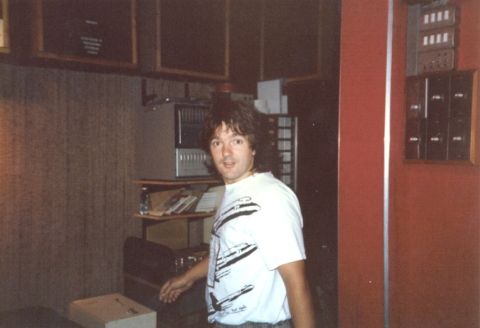
(Spaceward Studios circa 1982.)
F i r s t S t e p s
It was of course at Spaceward that I first met Dave Stewart & Barbara Gaskin in August 1982; little did I know it would be the beginning of a lifelong collaboration and friendship which 37 years later would see us flying halfway around the world to their Tokyo concerts.
I remember that first session very well, Dave was producing an artist called Peter Blegvad, recording a most haunting song called 'How Beautiful You Are'. The session was made more memorable because Dave wanted a telephone effect for the verse vocal, which we eventually achieved with Peter singing down a telephone in the studio's kitchen. It was my first session flying solo and it was initially a pretty terrifying experience. Both Dave and the session guitarist Jakko Jakszyk (now of King Crimson) I knew were very accomplished musicians and I must admit I felt quite out of my depth for the first few days, they were both exacting in their demands. However, I needn't have worried as by the end of that session we had developed an excellent rapport and in fact I went on to make many records with Jakko over the next few years. I also soon began to love how Dave was always pushing the limits of the available technology and proposing entirely different approaches to traditional recording methods.
I knew I had met someone very special. I had never heard anyone play keyboards like Dave and his studio rig was formidable. He was the first studio musician I encountered that scored all the parts, the discipline and attention to detail he instilled served me throughout my career. It was however a few weeks before I met Barbara and heard her sing for the first time. Although she was only providing backing vocals for this session, the beautiful delicacy and precision of her voice immediately had me mesmerised. Some of my favourite moments during my entire career were working with Barbara on her vocals.
B u s y D o i n g N o t h i n g
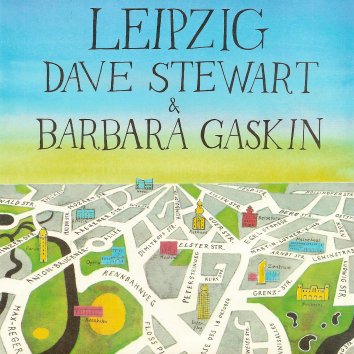
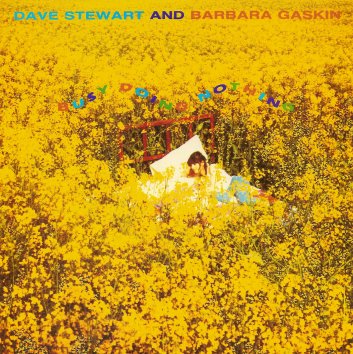
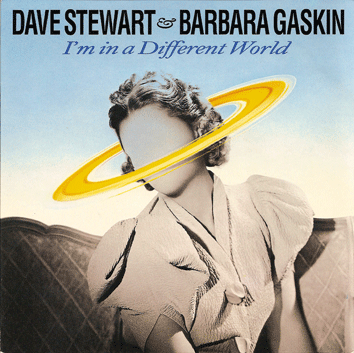
After Peter's record, for three years we never seemed to be out of Spaceward and there we produced some fabulous albums. There were many special sessions but one that really stands out is 'Busy Doing Nothing'. I swear that my brain rewired itself during that project as it turned out to be a massive technological challenge. We actually started work on the track at Trident Studios in London on Christmas Eve 1982 - Dave & Barbara had recorded a lot of their early tracks there and Dave needed somewhere with a grand piano, so we lugged his keyboards into the control room and recorded the first two sections of the song. You must remember this was way before any digital trickery came along, back then we were recording straight onto 24-track 2" tape.
Soon after that we decamped to Spaceward. The actual sequence (no pun intended) of overdubs that followed has blurred over the years. Dave and Barbara's sessions have never followed any traditional track laying format you would normally experience in a studio, we were really inventing many new recording techniques as we went along.
So the overdubs started, the main keys went down and then a guide vocal. Barb recorded a bank of vocal harmonies, Jakko came up and recorded the 'la la la' folky vocal intro tune in his best Bing Crosby voice. There was the odd elephant call (unused) together with a cockerel and a police car. This happens. Following a visit to the Red Lion pub next door, we returned with their "Time gents please!" bell for its own special appearance on the record. We also had a studio full of schoolchildren (procured by Jakko) singing various magical choruses, and then - we ran out of tracks with only half of the song recorded.
S y n c O r S w i m
The problem (some would say the discipline) with 24 tracks is that you eventually run out of them, at least that had been my experience up to that point. To get ourselves some more tracks, we recorded a special sync track of SMPTE time code (if anyone remembers that), hired in a second 24-track and synced the two machines together using some voodoo box called a Lynx. Yippee, 24 (actually 23) more tracks available. We did initially try to work with both machines running together, but the pitch slewing of the slave 24-track as it lurched drunkenly into sync did everyone's ears and brains in. So we bounced a stereo mix of the first multitrack onto the second and then worked on just the single machine until we finally recorded all the overdubs and vocals.
Things got even more interesting when Dave decided to record the playout of the song over the middle's eight's backing track (don't ask). Due to the complexity of the arrangement, we had to record it in sections and then edit the sections together on the multitrack tape. These days of course this simple task is achieved with a few mouse clicks and if you get it wrong, just press undo. Then, the only way was to extremely and very carefully whilst in full sweat - cut and splice the 2" tape. Not just once, I believe there were over 20 edits by the end.
These were still early days for Dave and Barbara at Spaceward so we actually ended up back at Trident in London for the mix. Unfortunately for some reason the voodoo box sensed an opportunity to go full black magic nuts and after a very long day we ended up abandoning the attempt at three in the morning. The next day a discussion followed in a local Soho boozer as to whether we could actually mix the track at Spaceward - it was a more relaxing place to work, but at that time their console sported only 32 main faders. That desk however was something special, and with help from studio owner Mike Kemp (who designed it) we managed to re-program its configuration to play back all 46 tracks. We also found a way to mute the slave 24-track machine until the two machines were running in sync, and that was a game changer. In the end the mix was fairly straightforward; this was in the days before fader automation, so we would mix the various sections of the song onto the 1/4" tape and then spice it all together.
I was literally flying by the seat of my pants during the recording of 'Busy', in many ways we were breaking new ground at Spaceward and it holds a very special part of the memories I have from that time. By the end I had developed a deep understanding of Dave and Barbara's recording methodology and also their humour, which peeks through in a number of their records.
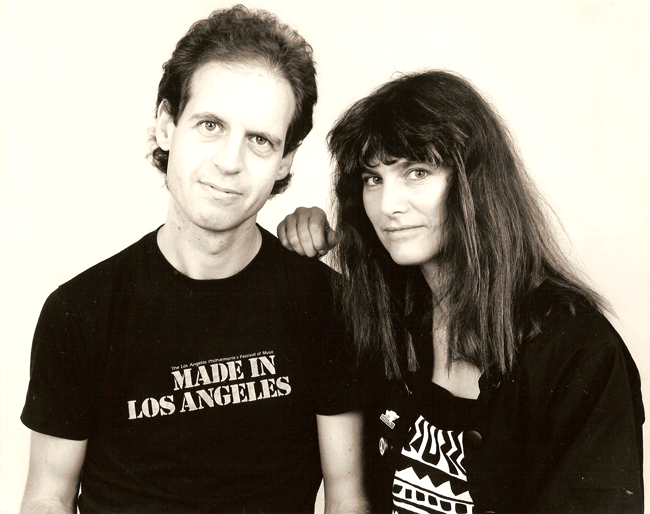
(Dave Stewart & Barbara Gaskin.)
P e r A r d u a A d A s t r a
By 1985 I was ready to spread my wings and Dave was instrumental in securing an offer from a prestigious London management company for me, so I moved on from Spaceward to become a freelance engineer/producer in London. Almost immediately I was working all over the world with artists including The Art of Noise, Tom Jones, Eric Clapton, The Stranglers, The Moody Blues, Paul Young, Berlin, All About Eve, Dave Gilmour and many more.
Even though through those years I was having the time of my life, in 1993 it became crystal clear to me that a certain MP3 file format was about to change the music industry forever, so I decided it was the right time to realise some of my other goals. Together with some of the ex-Spaceward staff, we founded the company that produced the SADiE digital audio editing system, which soon turned into a runaway success. The BBC was just moving away from tape to digital and they entirely re-equipped with SADiE. I was recently staggered to discover that the BBC still uses the system today. This endorsement was also the catalyst for many other European broadcasters to follow suit.
After SADiE, together with others we formed The Warp Corporation, a digital electronics consultancy based in Cambridge but most of our work was out in California. I later became the CTO of a firm with my role centred around Intellectual Property. Right now, I am heavily involved in an AI approach to deliver strategic patent intelligence, it is certainly preventing my grey matter from any form of delinquency.
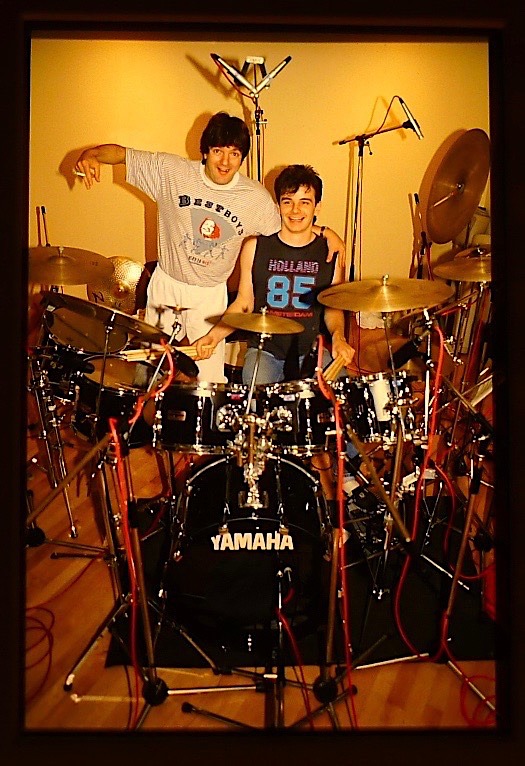
(Ted & Gavin Harrison, Smokehouse Studios 1988)
F u l l C i r c l e
I regret to admit that I lost touch with Dave and Barbara in the late '80s, I believe our last recording was the pipe organ for 'New Jerusalem' at St George's Church in London's West End some time in 1988. So in 1996, I was somewhat shocked and definitely delighted to receive a call from Dave to sound me out on a concert he and Barbara were performing at the Queen Elizabeth Hall on London's South Bank. The gig was a great success and led to a rekindling of our relationship and many more concerts. Ironically, it had also taken me full circle back to live mixing where I first started.
I still remain in touch with many wonderful artists from that extraordinary period of my life. I was thrilled when Anne Dudley received her Oscar and of course Dave and Barbara keep dragging me off to Tokyo most years to ensure my deafness is complete!
None of my subsequent music career would have happened at all without the apprenticeship I served at Spaceward with Dave and Barb and our friendship has actually grown stronger over the years. We still speak most days, planning all sorts of technological tomfoolery in preparation for when we can finally get back out there and make some beautiful racket again.
Ted Hayton, Suffolk, December 2020
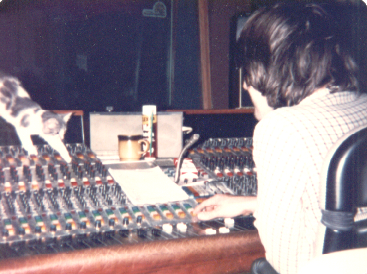
(Studio cat Sam EQ's Barbara's vocal.)
Return to top
Back to home page